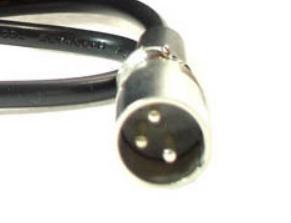|
| MobilityCharger 24 Volt, 3 Amp Mobilty Charger |
|
|
24 Volt, 3 Amp
Charger
Class 2 charger has a 3 Prong "Male" XLR Connector.

Please ensure that this is the correct connector
for your needs. There are NO refunds on this
item.
Reversed polarity protected.
LED Indicators:
Green: Power on, Float Charge
Red: Fast Charge
Proper Charging Procedures:
- Input voltage: 100-240V AC, 50/60 Hz
- Make sure the charger's output voltage matches
the battery's input voltage.
- Plug in the charger before connecting output
leads to the battery. GREEN LED
indicates power is ON.
- After hooking battery up to the charger, RED LED will light up indicating FAST CHARGE.
- GREEN LED will come
on when the charger has switched to FLOAT CHARGE, indicating that the battery
is close to being fully charged.
- Disconnect the charger first from the power
outlet, then from the battery.
- Avoid leaving the charger plugged in for an
extended period when not charging the battery.
Information on
wheelchair/scooter battery charger vs. battery problems
There are a lot of mobility chargers that are
purchased when there actually is a chair/scooter wiring/connector issue, or a
battery problem. If the mobility charger doesn’t work on your scooter/chair out
of the box, there are several possibilities:
1. This is a 24 volt charger, for a 24 volt
system. A 24 volt battery system with healthy batteries measures 25.4 to 25.5
volts at full charge, and 23.8 to 24.0 when effectively discharged. If the
batteries are severely discharged, to a point below 16 volts, the charger won’t
recognize a viable battery pack, and won’t begin charging. Usually, if the
chair/scooter won’t move, this is the case. Because of this safety feature, you
can’t measure charger voltage or current at the 3 pin plug, without the charger
being hooked to the chair. The charger has to be connected to a battery pack to
check these functions. There are ways to deal with a battery pack below 16
volts, but it’s possible the batteries are not
recoverable. This is a very common problem in mobility applications, and a lot
of chargers are purchased unnecessarily when the batteries are the problem.
2. Even though the terminal
connections may look clean and tight, there may be insufficient contact at one
or more cable connections, for good electrical contact. This will prevent proper
current flowing out, and back in (charging). This can prevent the charger from
recognizing a viable battery pack, similar to #1 above. Disconnect each cable
connection and clean/scuff all battery posts and cable ends. A wire brush,
battery post cleaner, etc. works well for this.
3. Average battery life in a mobility
application about 12-18 months, and less if the batteries are deeply
discharged/recharged on a daily basis. The deeper the discharge, the fewer the
cycles. If the run time is getting less and less, the batteries are coming to
the end of their life.
4. The
polarity at the connector may be reversed. These have the 3 pin XLR connector
found on about 90% of the wheelchairs and scooters in use, and wired the most
common way. This includes Pride (except “Victory”), Hoverround, Invacare (except
Lynx L3), Permobil, Drive, Ranger, Sunrise, Quickie (models with off-board
charger), all Golden (except “Companion”), Bruno, PaceSaver (off-board charger
models only- Atlas Plus 3, Eclipse, Esprit), Shoprider (except Sunrunner Deluxe
and Lithium-ion battery models), Heartway, Merits (all with off-board chargers),
AND most other mobility scooters and power chairs with off-board chargers &
XLR connector. May not be compatible with some EV
Rider, Zip’r, E&J, or Worldwide Seating chairs using the XLR connector, as
Everest-Jennings and these others reverses the wiring on pin 1 and 2 in the
connector. Correct polarity for the charger plug (male) is shown above. The
chair receptacle (female) will be the mirror image of this. The pins or holes
are marked.
|
